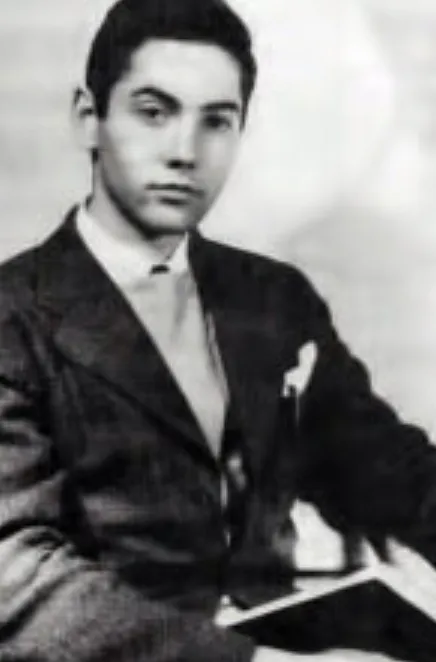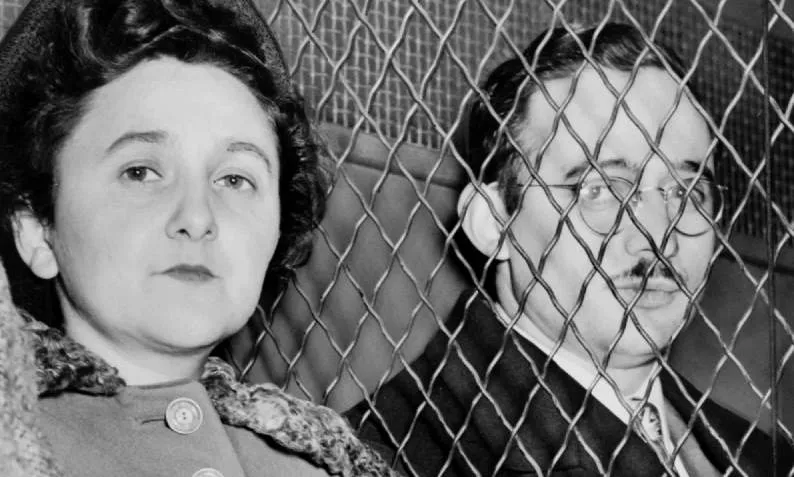The Boy Who Betrayed America: Ted Hall and the Secrets of an Atomic Spy
The story of US physicist Theodore ‘Ted’ Hall is not a black-and-white tale of an Atomic spy at the heart of a Soviet operation. It is the story of a teenager who worked on the Manhattan Project in Los Alamos, New Mexico and believed that if the US had a monopoly on the bomb, it would threaten global stability. He may have only been 18 years old, but Hall decided it was up to him to save the world.

Hall arrived at Los Alamos as a junior physicist on January 28, 1944, a child genius who’d graduated from Harvard. Little was known about his political beliefs.
He'd grown up in Washington Heights, New York playing ball in the street and sledding on the George Washington Bridge traffic ramps in winter. His parents moved to the US to escape imperialist Russia. His brother, 11 years old then Ted, was also academically gifted. Ed had taken two engineering degrees and served in the Army air corps during the war.
Ted had developed a rebellious streak early on. "As his family prepared to celebrate his bar mitzvah, Ted didn't want to participate because he was an atheist," Barnes Carrs writes in Operation Whisper. "The rabbi patiently talked him into cooperating but Ted still found a way to express his irreverence."
When it came time for him to make a speech at the ceremony, Ted shocked the congregation by criticizing the local transit line: "We must eliminate from the world," Ted said, "Poverty, greed, intolerance, and the Sixth Avenue E1."
Ted passed the time before Harvard by taking classes at the free City University of New York where he joined the Young Communist League. He was a defender of Joseph Stalin's treaties with Hitler.
When he turned 16, Hall headed to Boston and joined Harvard's John Reed Society. He studied German, math, and physics in addition to military courses and Marxist economics. Ted also met his university roommate, Saville Sax, who would later become Hall's fixer and espionage courier.
The making of a teenage spy
Before departing for New Mexico, Sax told Ted that if his work at Los Alamos included building a terrible weapon, he should inform the Russians. The roommates would reunite about four months later.
On the pretext that Hall was joining his family for his 19th birthday, Ted visited New York City where Hall and Sax arranged to meet a Soviet spy. Hall handed over details outlining how work was organized at Los Alamos. Subsequent deliveries involved Sax and/or Hall handing over technical details that contributed directly to the Soviet Union’s first atomic bomb test in 1949.
Hall’s reports made their way to the Soviet Consulate’s Anatoly Yatskov, the New York station chief, who transmitted the information to the NKVD secret police in Moscow using a one-time pad cipher, according to the Atomic Heritage Foundation.

Before long, Lona Cohen was appointed as Hall's handler. He was her main contact in Los Alamos, the first agent to give the Soviets a complete diagram of the initial A-Bomb. Klaus Fuchs, the Anglo-German atomic spy, would later verify for Moscow Center the accuracy of the intelligence Hall stole.
Hall eventually moved to Chicago, married, and told his wife that he slowly and deliberately made his decision to leak US intelligence. "At a certain point I stopped dithering and decided to act," Hall told his wife, according to Joan Hall's memoir. Ted said he was disgusted by the effects of the 1930s Depression, the rise of the Nazis in Germany, the power of the Fascists in Italy and Spain, and the economic problems that had affected his parents. Ted thought that if the Russians had an A-bomb, it would create a balance of power in the world and did not see himself as a traitor. He was sharing information with a wartime ally.
"The brand new social experience where you activate your gaming skills as you train like a spy."
- TimeOut
Take on thrilling, high-energy espionage challenges across different game zones.

The FBI investigation
After the war, he moved from New Mexico to Chicago where Hall - codenamed Mlad (Russian for ‘young one’) - earned a doctorate in physics and worked in a biophysics laboratory at the University of Chicago. He stayed in touch with the Soviets from time to time but by 1949 the FBI was investigating. At that point, Hall's older brother, Air Force Maj. Edward Nathaniel Hall, was designing rocket engines for nuclear-capable missiles at a top-secret Air Force Base in Ohio.
The Bureau had received decryptions of communiqués transmitted by the Soviets during the war that incriminated Hall and Sax, but no charges were ever brought against them - likely because the authorities did not wish to reveal the extent of their decryption efforts. In any event, Hall and Sax (codenamed ‘Oldster’) denied any involvement with the Soviets and there was no other evidence against them.

The stakes were high should Hall and Sax be arrested. Atomic spies Ethel and Julius Rosenberg were prosecuted in the US and received the death penalty - mainly on the basis of the confession of Ethel’s brother, David Greenglass. By the end of 1950, Anglo-German spy Klaus Fuchs had moved from the US to Britain, confessed to MI5, and was sentenced to 14 years in prison.
.webp)
Hall worked at the Sloan-Kettering Institute for Cancer Research until 1962 when he too moved to England. He’d received an offer from the Cavendish Laboratory of the University of Cambridge. If Britain's spies were aware they had another Los Alamos spy in their midst, they were keeping the intelligence close to their chest.
Ted Hall: idealist or traitor?
Hall’s spying was revealed in the 1990s by the National Security Agency’s declassification of the decrypted Venona cables. The intelligence he leaked included a valuable list of American and British scientists then working on the Manhattan Project.
Up until the day he died - in 1999 at the age of 74 - Hall never fully admitted to undertaking espionage. When he did address the topic, he insisted that he had acted out of youthful idealism.
Joseph Albright and Marcia Kunstel interviewed Hall for their book, Bombshell: America’s Unknown Atomic Spy Conspiracy. In it, Hall proclaimed that as a young man, he had “the right end of the stick. I am no longer that person but I am by no means ashamed of him”.
SPYSCAPE+

Join now to get True Spies episodes early and ad-free every week, plus subscriber-only Debriefs and Q&As to bring you closer to your favorite spies and stories from the show. You’ll also get our exclusive series The Razumov Files and The Great James Bond Car Robbery!


Gadgets & Gifts
Explore a world of secrets together. Navigate through interactive exhibits and missions to discover your spy roles.
Your Spy Skills
We all have valuable spy skills - your mission is to discover yours. See if you have what it takes to be a secret agent, with our authentic spy skills evaluation* developed by a former Head of Training at British Intelligence. It's FREE so share & compare with friends now!
* Find more information about the scientific methods behind the evaluation here.


Stay Connected
Follow us for the latest
TIKTOK
INSTAGRAM
X
FACEBOOK
YOUTUBE